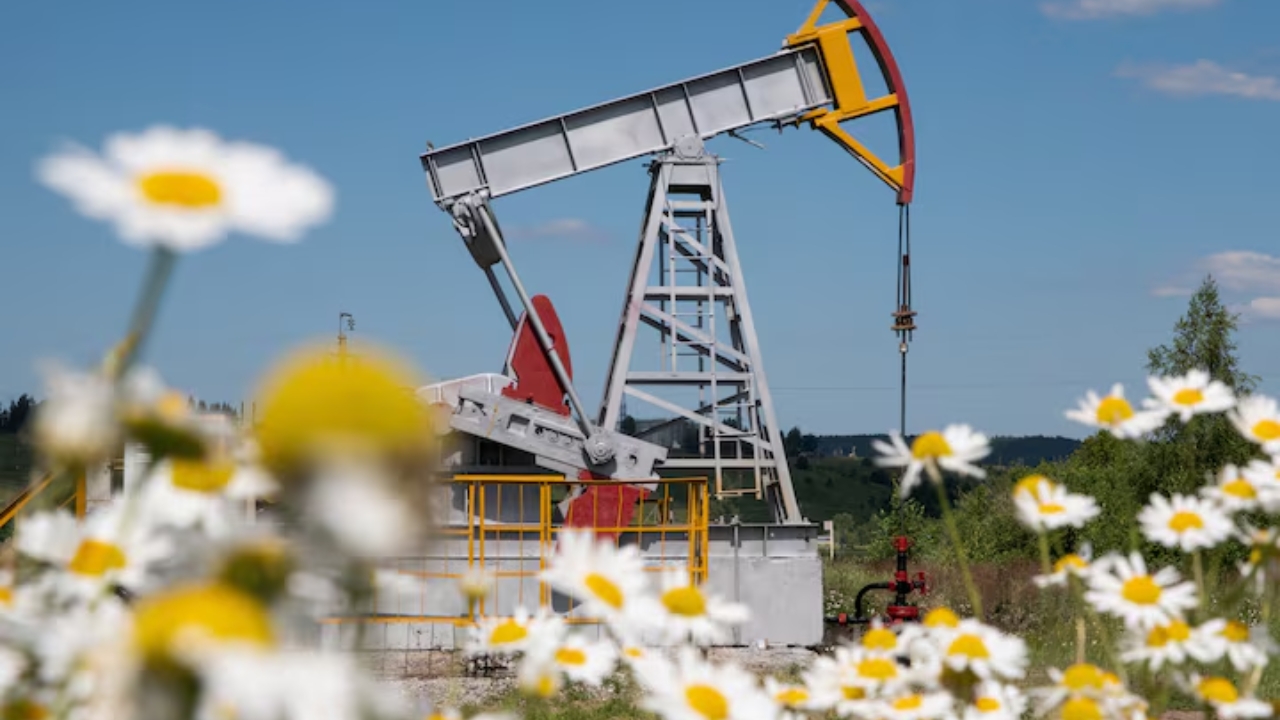
A Nutritionist’s Warm Guide to When to Enjoy Flaxs
Nutritionist Deepsikha Jain recommends 1–2 tablespoons of flaxseeds—morning, before meals or as a sn

Photo: Reuters
On September 15, 2025, the price of oil in the world market increased slightly after Ukraine carried out one of its largest drone attacks on Russian energy infrastructure. The attack involved hundreds of drones that targeted refineries and an important export terminal in western Russia. Even though the rise in oil prices was not very big, experts believe that these attacks could create serious risks for the global supply of crude oil.
The oil market is always sensitive to news of supply disruptions. When something threatens the flow of oil from a large producer like Russia, buyers and traders become cautious. They fear that less oil might be available in the future, and this drives prices higher.
This story is important because Russia is one of the world’s largest oil exporters. Ukraine’s drone campaign shows that the war is not limited to battlefields but is also hitting energy infrastructure. The damage or threat to facilities such as refineries and export ports could change the balance of the global oil market.
Details of the Drone Attacks
Ukraine used 361 drones in its overnight strike. The sheer number of drones shows how serious the attack was. Some of the key targets included:
Kirishinefteorgsintez refinery: Located in the Leningrad region, this refinery is Russia’s third largest. It processes about 355,000 barrels of oil per day, which is 6.4% of Russia’s total refining capacity. Losing even part of this capacity would be a major blow to Russia’s ability to produce fuel.
Primorsk export terminal: This terminal handles about 1 million barrels of crude oil per day. It is one of Russia’s most important gateways for sending oil abroad, especially to Europe. An attack here sends a message that Ukraine is capable of disrupting exports that are critical for Russia’s economy.
While Russia claims that many drones were shot down by its air defense systems, reports suggest that at least some of the drones managed to hit their targets. Even if the physical damage is not very big, the psychological effect on the market is strong. Traders and buyers now see these facilities as vulnerable.
Immediate Market Reaction
These are not dramatic jumps, but the direction is clear: markets are pricing in more risk. Even small increases can be important because they show that investors are reacting to uncertainty.
Why the Market is Nervous
Impact on Refineries: Refineries like Kirishi are key for turning crude oil into products such as gasoline, diesel, and jet fuel. If production drops, it could also affect Russia’s domestic market.
Global Dependence: Many countries still rely on Russian oil. Even with sanctions in place, Russia has found buyers in Asia and other regions. If those flows shrink, other countries will compete for oil from different producers, pushing prices higher.
Unpredictability: Drone warfare is unpredictable. It is hard to know when and where the next attack might happen. This uncertainty makes markets uneasy.
Political Reactions
These attacks also have a political side. Western nations and Ukraine’s allies see them as part of Kyiv’s effort to weaken Russia’s ability to fund its war. Oil exports are a major source of income for Moscow, so striking energy facilities directly hits the Russian economy.
At the same time, some leaders worry that targeting export terminals could escalate tensions further. If oil prices rise too high, it could affect economies worldwide, including those of Ukraine’s supporters.
There are also discussions in the United States and Europe about whether to tighten sanctions further. Some politicians argue that Russia should be punished more strongly for its invasion of Ukraine. Others, however, fear that stricter sanctions could make global energy markets even more unstable.
The Bigger Picture of Oil Prices
Global Demand: Demand for oil rises when economies grow strongly and falls when economies slow down. Currently, some economies are showing weak growth, which could limit demand.
Sanctions and Politics: U.S. and European sanctions on Russia already restrict some oil exports. Future sanctions could tighten the squeeze.
OPEC+ Decisions: The Organization of the Petroleum Exporting Countries (OPEC) and its partners, including Russia, sometimes cut or increase production to control prices.
Economic Data: Reports about inflation, unemployment, or interest rates can influence how much oil businesses and consumers are likely to use.
What Could Happen Next
Global Impact
Oil is not just another commodity. It affects almost everything—transport, electricity, manufacturing, and even food prices. If oil becomes more expensive, costs rise across many industries. This could fuel inflation, making life harder for ordinary people around the world.
For poorer countries, higher oil prices can be especially damaging. They may struggle to afford enough fuel, which can slow down economic growth.
For richer nations, high energy prices can create political pressure. Governments may face protests if gasoline or heating bills go up too much.
The drone attacks on Russian oil infrastructure mark a dangerous new stage in the war. By striking places like the Kirishi refinery and Primorsk terminal, Ukraine is showing it can hit Russia where it hurts most—its oil exports.
Even though the immediate price increase was small, the long-term impact could be big. Oil markets thrive on stability, and these attacks add new layers of risk and uncertainty.
If such attacks continue, global oil prices may climb higher. That could affect not just Russia and Ukraine, but the entire world economy. Governments, companies, and ordinary people will all feel the impact through higher energy costs.